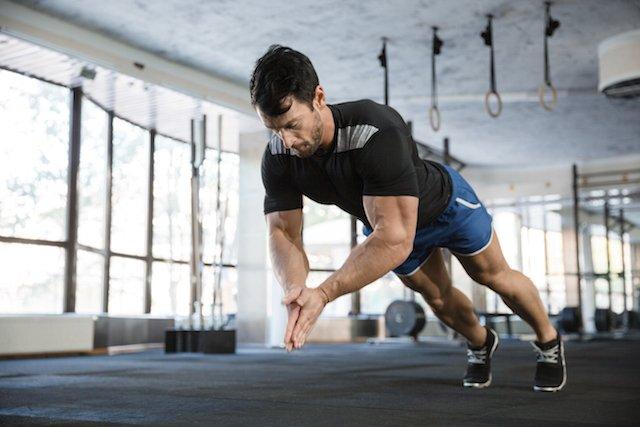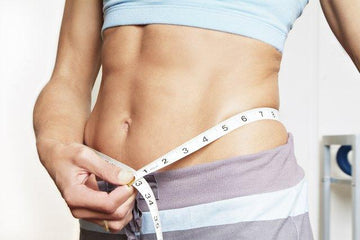

Jack Up Your Hormones and Muscle Mass with Plyometrics
Table of Contents
Jack Up Your Hormones and Muscle Mass with Plyometrics
by: Robbie Durand
Exercise can induce acute changes in concentrations of anabolic hormones such as testosterone and catabolic hormones such as cortisol. Specifically, resistance training protocols that incorporate a lot of muscle fibers (i.e. squats, deadlifts) have been shown to result in increases in both testosterone and cortisol. Protocols high in volume (sets and repetitions during a single session), moderate to high in intensity, using short rest intervals and stressing a large muscle mass tend to produce the greatest acute hormonal elevations of testosterone compared with low-volume, high-intensity protocols using long rest intervals. Thus, the acute testosterone response to resistance exercise in adults varies depending on the intensity or volume of training.
Weights are not the only way to increase testosterone in men; plyometrics can also increase serum testosterone levels in men. Plyometrics are exercises that involve muscles exerting maximum force in short intervals of time, with the goal of increasing both speed and power. This type of exercise training focuses on learning to move from a muscle extension to a contraction in a rapid or “explosive.” manner. Jump squats and plyo-pushups are typical plyometric exercises used by athletes. Previous research has found significant increases in serum testosterone and cortisol following 100, 200, and 300 jumps in young adult rugby players.
Plyo-Push-Ups:
Plyometric Jump Squat
Jump Your Way to Higher Testosterone Levels
Most people will usually finish off their leg workout with either some leg extensions or leg curls, but researchers from New Zealand reported that ending your leg routine with jump squats boosted testosterone levels. The combination of resistance and plyometric training, or complex training, may yield greater functional gains than either method alone. As testosterone responses to complex training, routines creates an enhanced anabolic physiological response. Studies have found that explosive full-body movements will simultaneously increase anabolic hormones (growth hormone, testosterone, etc.) while improving strength gains.
Researchers investigated acute responses of salivary testosterone and cortisol to complex squat exercise bouts. After a standardized warm-up, 16 semi-professional rugby players performed 1 of 4 exercise bouts in a cross-over manner:
Box Squats:
Squat Jump:
Power-Power: Then they did three sets of jump squats
Here is a brief example of the different workouts:
Power-Strength: Then they did three sets of jump squats
Strength-Power: Then they did three sets of box squats
Strength-Strength: Then they did three sets of box squats
There were 3-minute rest periods between sets and 4-minute rest periods between exercise blocks. Each player completed each session twice a week over a 4-week period in a balanced random order such that each player performed a total of 8 bouts.
Each player completed each session twice a week over a 4-week period in a balanced random order such that each player performed a total of 8 bouts. The jump squat sets consisted of 3 sets of 50 percent of the weight with which the athletes could just manage one box squat rep. Each of the three box squat sets consisted of 3 reps with a weight that the athletes could just manage to do three reps with.
At the end of the study, the greatest overall hormonal responses were the increase in testosterone (13%) and a slight increase in cortisol (27%) after the strength-power bout. The hormonal response after the strength-power bout suggests that this exercise sequence provides an enhanced anabolic milieu for adaptation. So the next time you do legs, try starting off with a couple of sets of box squats and end the workout with a few sets of jump squats to get the biggest increases in testosterone.
 Plyometric Jumps vs. Resistance Exercise: Whats Increases Testosterone More?
Plyometric Jumps vs. Resistance Exercise: Whats Increases Testosterone More?
Researchers wanted to compare the effects of 2 exercise modalities in random order, on separate evenings, one week apart and examine the anabolic hormones in response to each.
Resistance Exercise Protocol:
One-legged squat 3×12
Lunge 3×12
Sumo squat 3×12
Step up 3×12
Plyometric protocol Exercise
Drop jump 3×12
Power step up 3×12
Repeated long jump 3×4
Jump lunge 3×12
At the end of the study, testosterone increased significantly from pre-exercise to 5 min post-exercise in response to both the resistance exercise protocol and the plyometric protocol, indicating a potential anabolic effect. However, the cortisol responses were different as the resistance exercise protocol resulted in a decrease in cortisol during the recovery period whereas the plyometric protocol resulted in an increase in cortisol 30 min after the plyometric exercise. This suggests the stress from the exercise protocol on the body was much greater after the plyometric protocol compared to the resistance exercise protocol.
Key Points: Plyometric exercises can result in similar increases in testosterone as resistance exercise but the overall stress on the body is much greater than that of resistance exercise. Be sure not to use plyometric too often to avoid overtraining the nervous system.
Klentrou P, Giannopoulou A, McKinlay BJ, Wallace P, Muir C, Falk B, Mack D. Salivary cortisol and testosterone responses to resistance and plyometric exercise in 12- to 14-year-old boys. Appl Physiol Nutr Metab. 2016 Jul;41(7):714-718.
Cadore, E.L., Pinheiro, E., Izquierdo, M., Correa, C.S., Radaelli, R., Martins, J.B., et al. 2013. Neuromuscular, hormonal, and metabolic responses to different plyometric training volumes in rugby players. J. Strength Cond. Res. 27: 3001–3010.
Crewther, B., Keogh, J., Cronin, J., and Cook, C. 2006. Possible stimuli for
strength and power adaptation: acute hormonal responses. Sports Med.
36(3): 215–238.
Kraemer, W.J., Marchitelli, L., Gordon, S.E., Harman, E., Dziados, J.E., Mello, R., et al. 1990. Hormonal and growth factor responses to heavy resistance exer- cise protocols. J. Appl. Physiol. 69: 1442–1450.
Pullinen, T., Mero, A., MacDonald, E., Pakarinen, A., and Komi, P.V. 1998. Plasma catecholamine and serum testosterone responses to four units of resistance exercise in young and adult male athletes. Eur. J. Appl. Physiol. Occup. Physiol. 77(5): 413–420.
Smilios, I., Pilianidis, T., Karamouzis, M., and Tokmakidis, S.P. 2003. Hormonal responses after various resistance exercise protocols. Med. Sci. Sports Exerc. 35: 644–654.

















